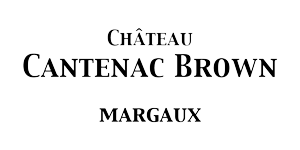Everything has to be learn, even wine tasting. How to taste a wine ? What kind of glass do we use ? How to serve wine ? Eyesight, sense of smell, taste… you will have to heighten your senses to enjoy aromas and tannin of the wine. Through this article, discover all the secrets of a wine tasting.
Taste a wine : use your senses
1° : Eyesight
The first step to taste a wine is to look at it, this step is called the visual exam. What can we learn about a wine by watching it ?
Wine colour and reflections
First of all, the colour of the wine can give you an idea of the grape variety and therefore the location of the wine. In addition, the reflections can also give you information about the age of the bottle. On the one hand, the reflections of white wines are first green and become silver and then gold with time. On the other hand, the reflections of red wines also evolve with time, they are cherries at the beginning and then more and more tuiled.

Tears of wine
It is possible to estimate the amount of sugar and alcohol present in the beverage thanks to the tears. To make them appear, we have to rotate the wine in the glass, this operation will be easier if the base is firmly pressed against a flat surface. Then, the tears will flow around the glass. The heavier and the longer it takes to fall, the more it reveal a significant presence of sugars and alcohol in the wine.
2° : Sense of smell
First nose
For the first nose, it is necessary to smell the wine without aerating it. The first nose is intended to recognise the defects of the wine. The aroma being only very little developed at this time, the defects, including a «corked» wine, are quickly spotted.
Second nose
During the second nose, it is necessary to aerate the wine, in other words open it, in order to release its aromas. At the time of the recognition of the aromas three families are to be distinguished:
- Primary aromas: they come from the grape variety and the floral environment of the vineyard.
- Secondary aromas: they come from the fermentation of the wine.
- Tertiary aromas: they come from the ageing of wine.
3° : Taste
After looking and smelling the wine comes the tasting. it is divided in three steps : the attack, the middle of mouth and the final.
Attack: This first phase corresponds to the moment when we will put a small amount of wine in the mouth while sucking a small amount of air, the goal being that the wine releases its aromas. The attack can be flexible, frank or smooth.
Middle of mouth: This second phase allows to be interested in the balance of sugar, alcohol, acidity and tannins (for red wines) present in the wine. It is possible to describe the sensation of wine in the mouth: dry, light, fresh, tannic, astringent, round…
Final: This third and last phase refers to the overall impression left by the wine after tasting it. In addition, in the final we talk about length in the mouth. Once the wine is swallowed we count the duration of the aromas in the mouth in caudalie (1 caudalie = 1 second). The longer the aromas persist, the higher the quality of the wine is.


